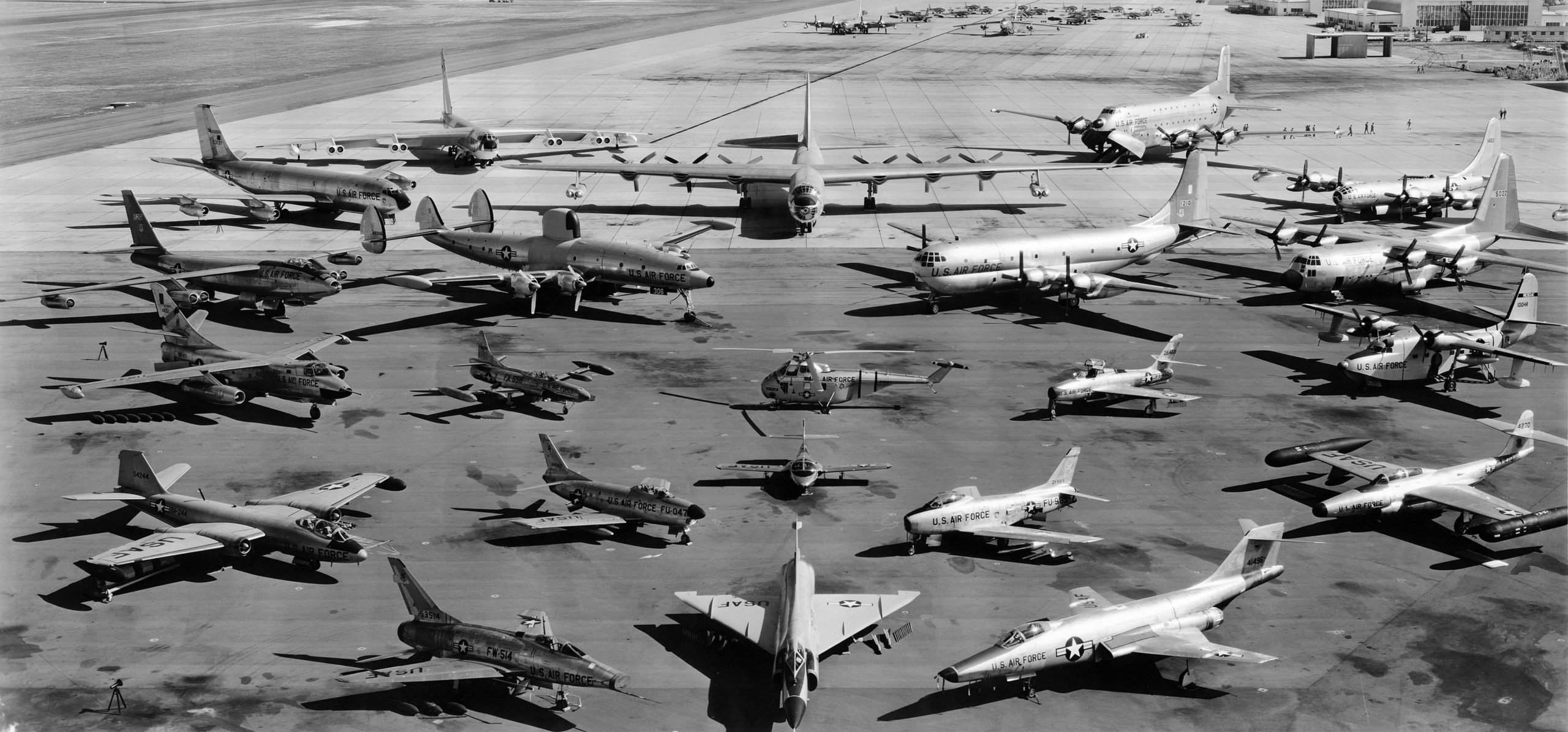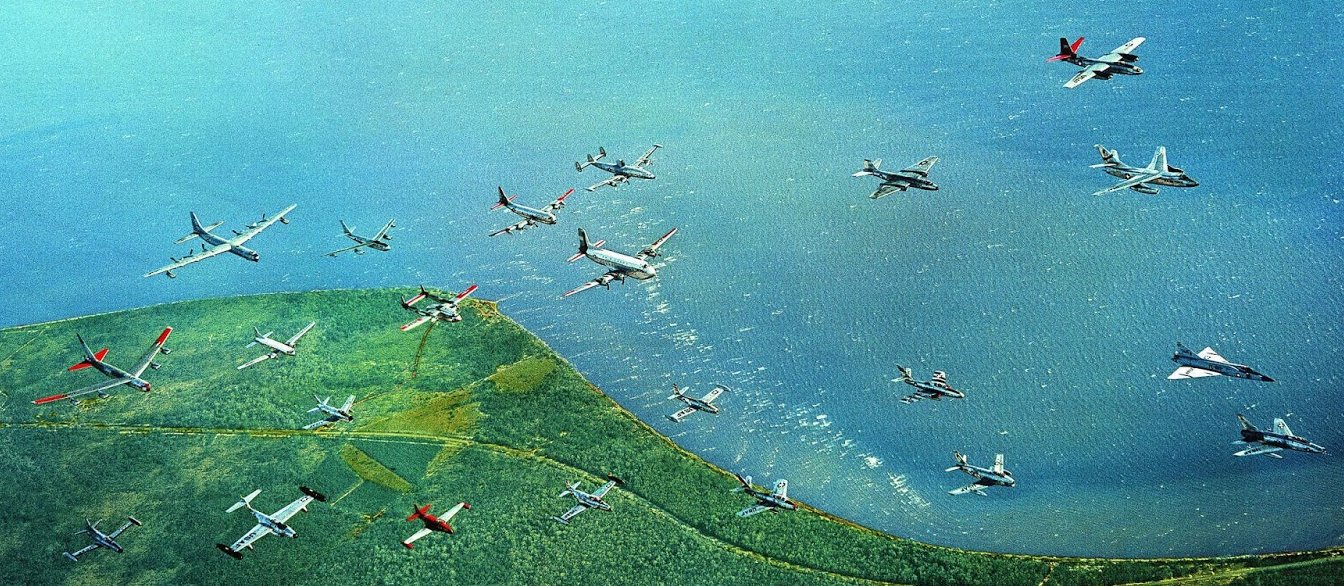Jets were a whole lot sexier 60 years ago

Don’t get me wrong: today’s aircraft are beautiful in a deadly, radar-absorbing kind of way; but the U.S. Air Force’s inventory during the early Cold War-era was like steamy, chromed-up sex (see the color picture below).
Just a couple of random thoughts while we are on the subject of old warbirds: my great-uncle flew on B-36 Peacemakers (the massive plane in the top center) so that plane has always fascinated me. The B-36’s wingspan was so large that one of its wings was wider than an entire B-24 Liberator. Just its control surfaces (flaps, ailerons, etc.) cover more square footage than the B-24’s entire wing area. You’ve probably heard the slogan “six turning and four burning,” which comes from the Peacemaker’s six piston engines and four jets, but more engines equals more problems so crews had another nickname: “two turning, two burning, two smoking, two choking, and two more unaccounted for.”
The United States’ first intercontinental bomber briefly served as Strategic Air Command’s front-line bomber, but was soon phased out for the B-52 (top left) — which has served long enough to have instances where grandfathers, fathers, and sons have flown B-52s. This photograph was likely taken in 1955, meaning the B-52 was just a toddler.
With rapid advancements in technology and tactics, many of these planes saw just a few years of service. But barring war with Russia, China, or another nation that can potentially threaten our air supremacy, the C-130, KC-135, and B-52 platforms will be operating for years to come.
